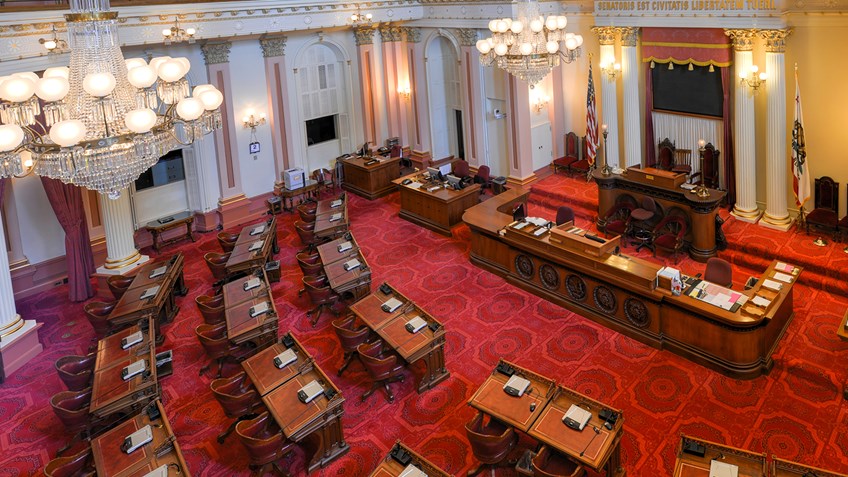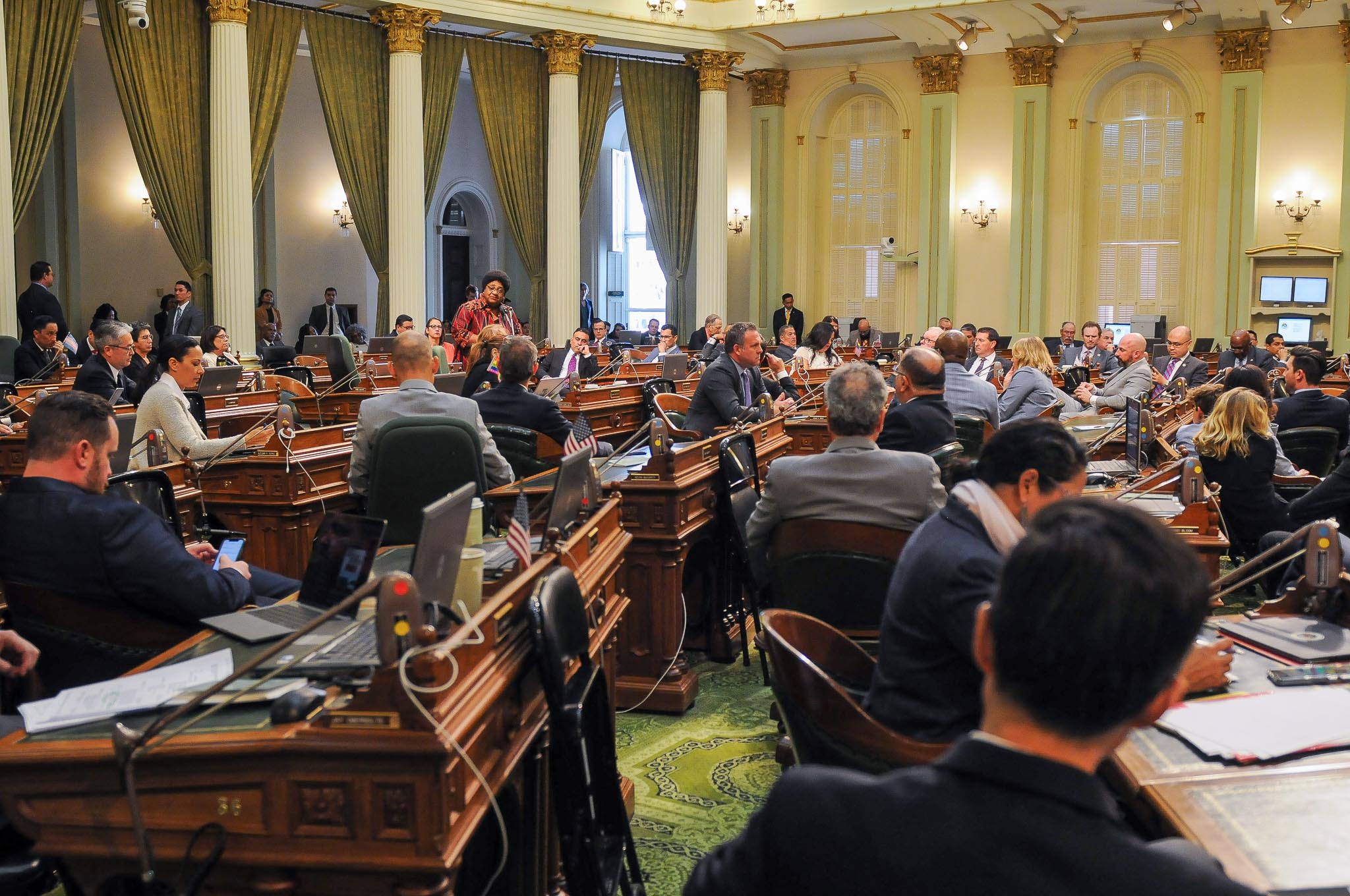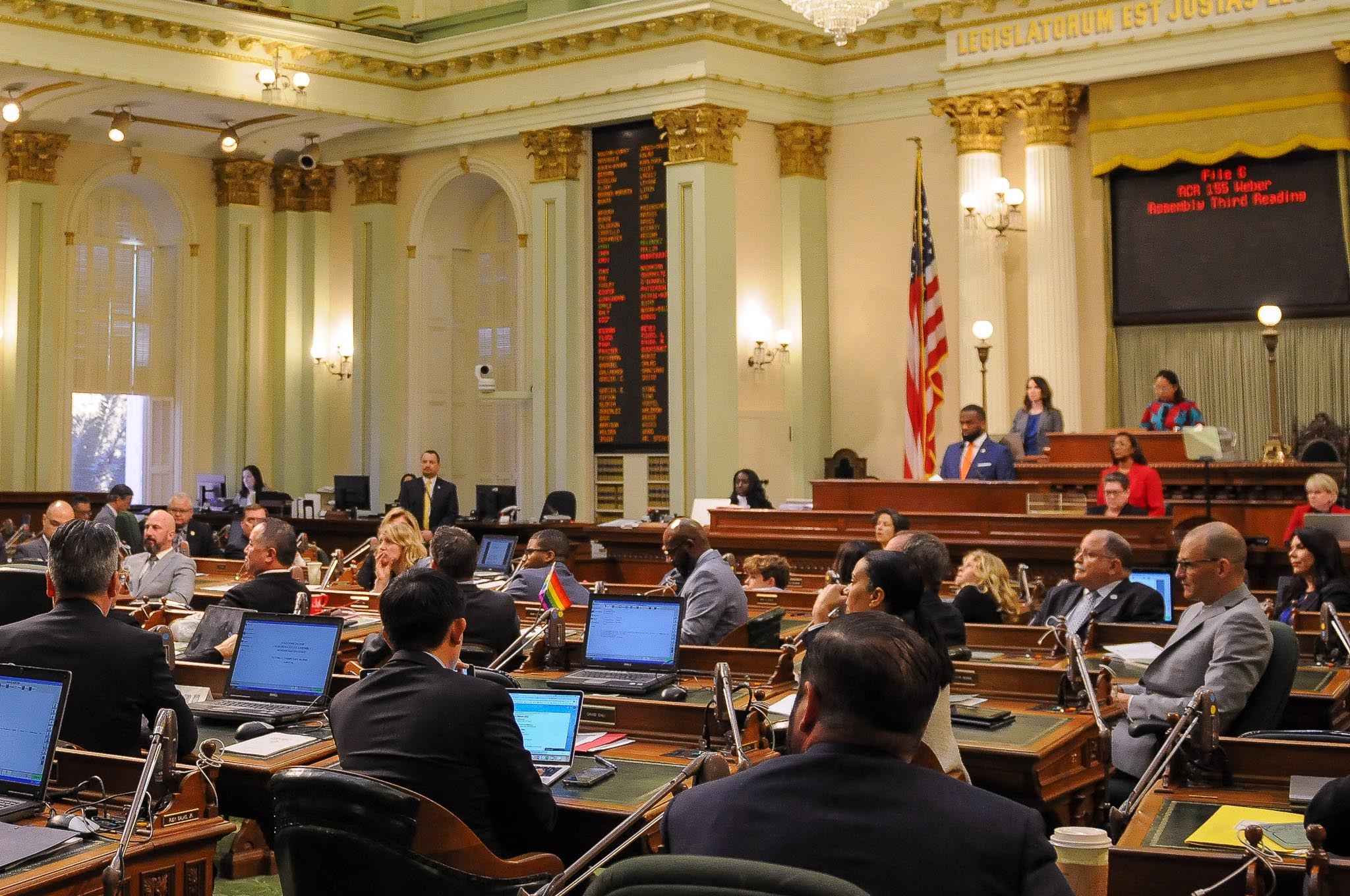
The California Senate chambers. (Photo: Wikipedia)
Pitching Projects for Budget Funding
Part of the California budget process is for legislators and interested parties to pursue funding for a specific project
By Chris Micheli, December 10, 2022 8:39 am
Part of the California budget process, certainly when the State’s General Fund enjoys a surplus of revenues, is for legislators and interested parties to pursue funding for a specific project in California. For example, proponents may desire funding for a project such as green space, or a community recreational center. The other type of project is one pursued by a legislator or group of legislators (e.g., those representing a local area of the state that is pursuing state funding for a regional project, such as a transportation corridor).
In either approach, the purpose is to secure funding for a particular project with that funding usually coming from the state’s General Fund. On occasion, there might be the opportunity to qualify for funding from a special fund.
Like the legislative process generally, there are different procedures and players in the state budget process. While the annual budget bill is the largest bill that makes it through the legislative process, both in amount of money appropriated and number of bill pages, there are critical players involved in the budget process and there are specialized procedures to comply with in putting together the budget. And, there are a number of bills that make-up the budget.
More than a decade ago, the first day of the 2-house budget conference committee was entirely dedicated to hearing “Member Requests.” On this day, the six budget conferees heard from nearly every Member of the Senate and Assembly, who appeared before the conference committee to discuss the importance of funding their district request(s), such as funding for a new community park or pool,
While the Legislature does not use the budget conference committee much these days, and did away with Member Day for the budget conference committee when the state’s budget first was deep in the red, in recent years there has been an effort to provide some state funds for these district projects for many legislators. Such funding requests can be found towards the end of the budget bill, with geographic information available.
As you might expect in pursuing budget funding requests, there are additional vocabulary words or terminology that are used, such as budget bill, budget bill junior, trailer bill, Finance Letter, Budget Change Proposal, etc. Those pursuing budget funding requests need to become familiar with this budget lingo.
In addition, it is important to under the procedural aspects of the budget. The process for considering the budget is focused on the work of the respective five subcommittees of the Senate Budget and Fiscal Review Committee and the six subcommittees of the Assembly Committee on Budget. These subcommittees in the two houses are where most of the budget appropriations are heard, debated, and voted on.
Thereafter, the full budget committees of the Senate and Assembly will normally accept and approve the actions taken by their respective subcommittees. Some budget proposals, often those contained in the May Revise, may only be considered in the full budget committees. Once the respective houses approve their version of the state budget, the two houses attempt to finalize a “2-party agreement,” which means the Democrat-controlled Assembly and Senate will approve budgets and usually send it to the Governor by the June 15 constitutional deadline for passage of the state budget, knowing that more work needs to get done.
The next stage is the involvement of the two Democratic leaders of the Assembly and Senate, as well as the Governor and Administrative officials, primarily the senior staff of the Department of Finance and Governor’s Office. This is when they work toward a “3-party agreement,” which will finalize the budget for the forthcoming fiscal year that begins July 1.
Nonetheless, most Capitol observers by now recognize that the state budget is no longer done just during the month of June. Instead, it is modified, potentially half a dozen times or more, later in the legislative session, and even during the ensuing next calendar year in the months leading up to the adoption of the budget for the next fiscal year.
If you are trying to get the Administration to address your project in the Governor’s budget proposal on January 10, or even during the May Budget Revision, proponents of that project need to start early, literally right after the fiscal year begins. That is because the departments must make their budget requests to their agency, which in turn must submit their proposals to the Department of Finance, and then to the Governor’s Office for ultimate determination.
If you are not successful in getting into one of the Governor’s two budget proposals, then you must get the Legislature, ideally in both houses, to adopt your funding proposal as part of their budget. That usually means getting one or both budget subcommittees to include your funding in the Assembly and/or Senate versions of the budget. Once the Legislature approves the project’s inclusion, then you will have to return to advocating with the Governor’s Office and Department of Finance so that the funding is not subject to a line-item veto.
- California Department of Child Support Services - December 24, 2025
- Mistakes in Legal Pleadings - December 23, 2025
- The Division of Property Concerning Retirement Plan Benefits - December 23, 2025





One thought on “Pitching Projects for Budget Funding”